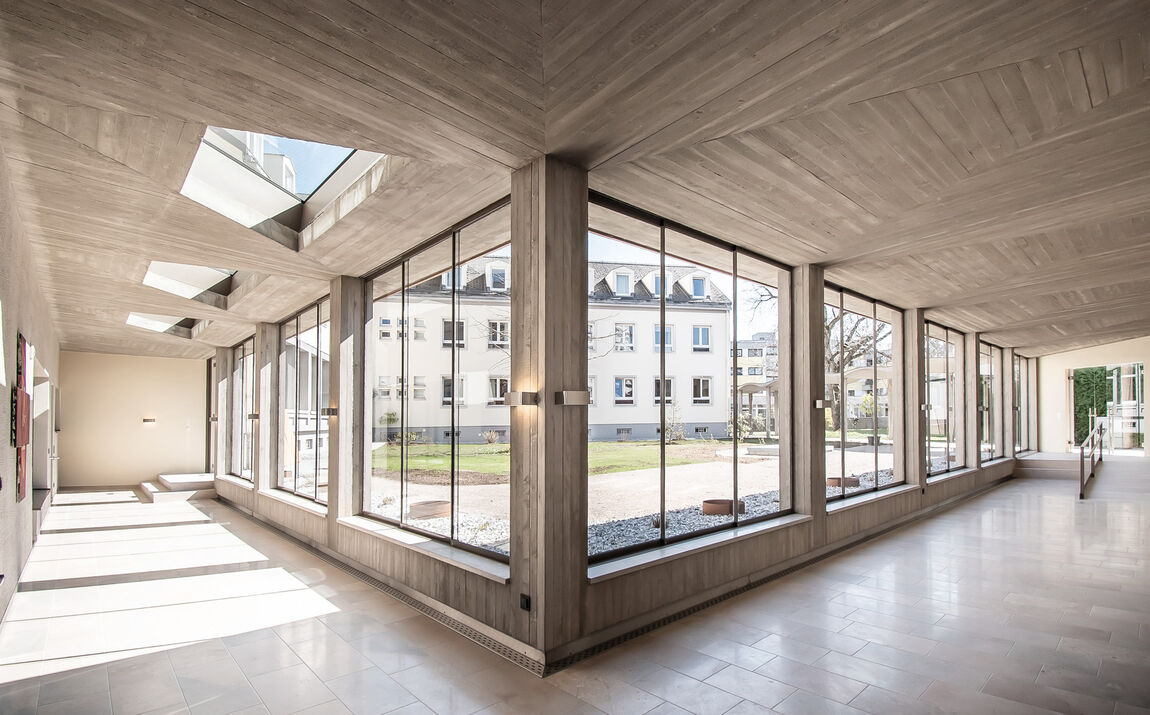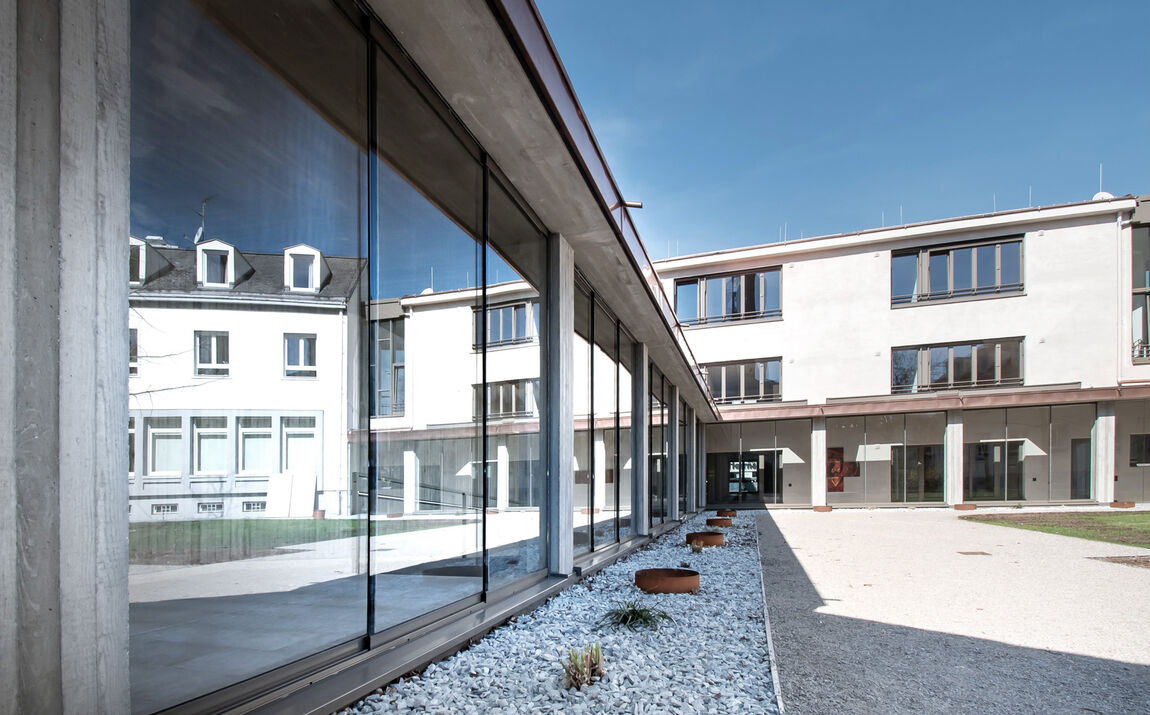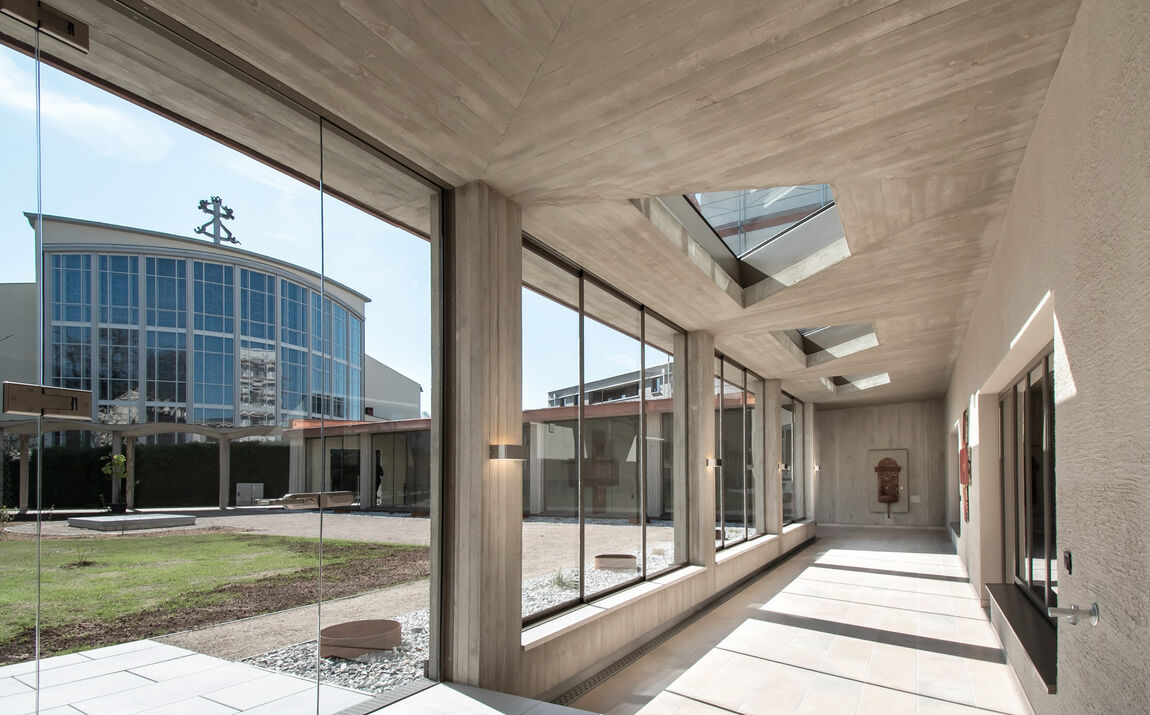In favour of Glas Marte
A total of seven GM TOPROLL® 10/14 systems were professionally installed in the cloister of the abbey – a listed building – by Gschaider Metalltechnik from Obertrum. The Salzburg-based architect Christoph Scheithauer (cs architektur) deliberately chose our system because of the profile geometry that perfectly matches the architecture and the detailed requirement. With dimensions of 3,150 x 2,700 mm and particularly slender profiles, the sliding systems ensure maximum incidence of light. The powder-coated anthracite grey imparts contour to the windows and thus a modern colour to the entire cloister. After a simple installation, GM TOPROLL® systems delight their users in everyday life: Weather-resistant small parts and a low-maintenance design mean little care effort. Plastic-coated stainless steel ball bearing rollers ensure low-noise running and the concealed brush seals prevent freezing up in winter. In addition, the sliding systems with pressure cylinder locks are fully lockable.
Old and new united in harmony
Herrnau Abbey houses the community of the Eucharistic Sisters, who work as pastors in the parish and find the necessary peace behind the abbey walls to practice their faith. Recently, new constructions and conversions were carried out on the site with care, so that a coherent overall ensemble was created. In addition to the existing buildings, the church, the church tower and the vicarage, these include some new buildings for the parish and the Caritas: a kindergarten, apartments and a centre of excellence – as well as the abbey and its extension itself. The church and abbey were built between 1957 and 1963 and are now protected as historical monuments. Accordingly, careful handling of the existing buildings was required. One of the challenges was that part of the cloister with the corrugated concrete roof construction that is open on both sides and was to be preserved. This has been preserved in its entirety. The connection to the new, glazed part of the cloister is made in such a way that the corrugated part connects to the side of a wall with an entrance door. The corrugated shape of the existing structure was interpreted with a folded soffit in fair-faced concrete.


